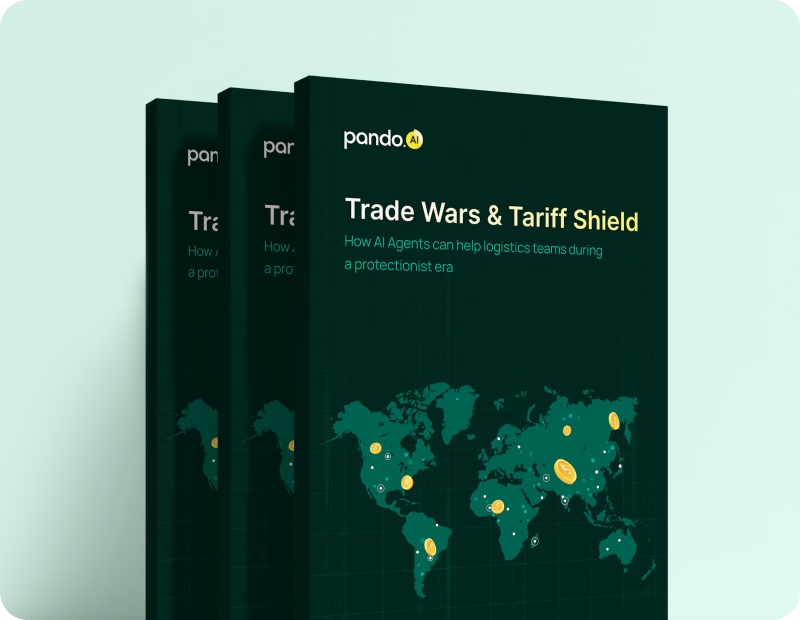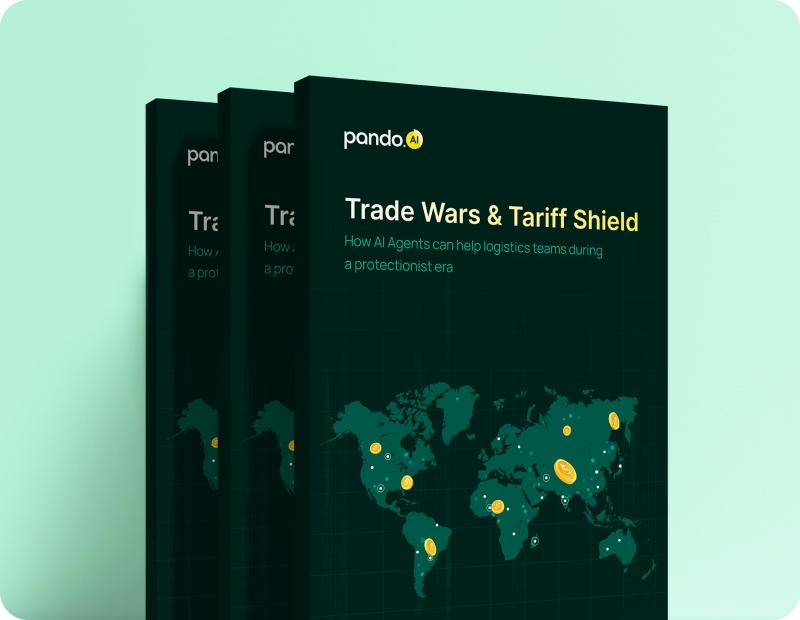-
Products Products
- Industry
- Initiatives
- Resources
- Company
- Book a demo

Before you go: Logistics leaders just dropped the truth on AI
The State of AI in Logistics 2025 is here — no hype, just real conversations and raw insights.
How the red sea crisis disrupts logistics and the role of technology
Anticipating supply chain risks, responding with agility and building predictability with logistics technology.
Published on February 20, 2024 • 6 mins read
Durga Pratiha

Anticipating supply chain risks, responding with agility and building predictability with logistics technology.
More than 20% of global trade often flows smoothly through vital arteries like the Suez and Panama Canals. Yet, recent events in the Red Sea (and the drought in Panama Canal) have thrown a wrench into those well-oiled gears, serving as a stark reminder of the fragility of interconnected supply chains. Imagine the impact when key shipping lanes become hotspots for conflict, disrupting the movement of goods and sending ripples of uncertainty across industries. This is the reality faced by the world after the Red Sea Crisis, an event that transcended headlines and directly affected countless businesses.
But let's rewind a bit. The Red Sea, far from being just a scenic backdrop, is a critical trade route connecting Europe, Asia, and Africa. Millions of tons of cargo traverse its waters daily, making it a linchpin of the global economy. Remember the Ever Given incident in the Suez Canal? That's just one example of how a single disruption can have cascading effects. In the wake of the Red Sea Crisis, logistics companies have faced tough decisions, balancing security concerns with the need to keep goods flowing efficiently. Some rerouted around Africa, adding 30% more time and cost to journeys, while others braved the potential risks.
This is yet another proof that disruptions are the norm and becoming more frequent when it comes to global supply chains. The Red Sea Crisis offers an opportunity to reflect on navigating uncertainty and mitigating risks.
The Ripple effects across industries and how companies are handling it
The recent attacks by Yemen's Houthi fighters on ships in the Red Sea have sent shockwaves through global trade, disrupting shipping routes, and causing delays that ripple across industries. Let's delve into how companies are still struggling to navigating these challenges:
-
Disrupted shipping routes and delays
The attacks have forced many companies to reroute their ships, leading to longer and more expensive journeys. This disruption has resulted in significant delays in the delivery of raw materials and components, impacting production schedules and supply chains worldwide. Companies like DHL, Volvo, Adidas, and others have reported disruptions, leading to delayed deliveries impacting customer experience
-
Increased transportation costs and insurance premiums
With longer routes and heightened security concerns, transportation costs have surged, nearly tripling shipping costs from Southeast Asia to Europe. Some companies are forced to move their cargo through air. Insurance premiums have also risen as companies seek coverage against heightened risks. Increased expenses have affected the bottom line of companies across industries, adding financial strains due to unexpected rises in operational costs.
-
Inventory challenges
Disrupted shipping routes have caused imbalances in inventory levels, with some companies facing shortages of critical components while others grapple with excess inventory. This imbalance poses logistical and financial challenges, impacting production, stockouts, and customer satisfaction across sectors like automotive, electronics, and retail.
-
Disruption in production and sales
Manufacturers, including automotive, consumer products and electronics, are experiencing disruptions in production due to delays in receiving essential parts and materials. Retailers are awaiting to receive their products from their global suppliers while managing stock-outs. Consequently, sales forecasts are being revised, impacting revenue projections as companies struggle to meet customer demand. Companies such as Volvo and Tesla have halted production at factories, while others like Volkswagen have altered shipping routes to navigate the crisis.
Turning the tide: How tech can help prepare for global trade disruptions
In the face of unprecedented challenges posed by global trade disruptions, technology emerges as a vital tool for you to bolster your resilience and mitigate risks. Here's how manufacturers and retailers are using technology to pave the way for smoother navigation through turbulent waters:
-
Gain visibility of diverted cargo for better port-arrival predictability
You can utilize real-time visibility platforms to track diverted cargo and anticipate port arrivals more accurately. According to a study by McKinsey & Company, companies with access to real-time visibility solutions experience up to 30% fewer delays in their supply chains. This visibility enables proactive decision-making and allows you to adjust production schedules and inventory levels, accordingly, minimizing the impact of delays. You can also plan your downstream logistics better to avoid any detention, demurrage charges etc. You can also evaluate alternate mode options balancing for cost, speed & emission factors based on the product type, customer expectations etc. and plan rerouting strategies better.
-
Collaborate swiftly with carriers to reduce delays and strengthen carrier relationships
A disruption of this scale triggers multiple conversations with your carriers and eco-system partners to help you to respond faster. Ocean freight is also fraught with complex documentation and regulatory compliance and any gaps here may further add to the delay. With a transportation management solution for global trade, you can execute ocean shipping documents accurately and promptly to reduce the risk of non-compliance, errors, fines, and delays, allowing carriers to clear customs and transit ports more efficiently. Enable real-time tracking & alerts for shipment status, customs status, and documentation status to improve end-to-end milestone level visibility, reduce idle times, avoid delays, and this seamless collaboration strengthens carrier relationships in this time of crisis.
-
Benchmark before you spot-buy to secure a fair market price
You are looking to offset delays by buffering more inventory and thereby resorting to spot-buys. With ocean freight rates touching 3X, this could drive a hole in your pocket. With a freight procurement solution, integrated with market intelligence, you can leverage historical data and market insights to benchmark prices for spot-buy transactions. This secures fair market value, mitigates overpaying, and protects your bottom line. Compare insights from multiple providers for real-time rate benchmarking to negotiate effectively. For deeper insights into freight sourcing, explore our blog post on 5 use-cases for autonomous freight sourcing.
Building resilience through strategic supply chain tactics
The Red Sea Crisis serves as a harsh reminder. It underscores the inherent risks in fragile supply chains with critical bottlenecks. Diversification, flexibility, and real-time visibility are crucial for building resilient supply chains.
Here's what you can do:
- Diversify your routes and suppliers: Explore alternative shipping lanes, production locations, and sourcing options.
- Embrace data-driven decision-making: Leverage technology to gain real-time visibility into your supply chain, anticipate disruptions and make informed decisions around rerouting strategies.
- Build strong partnerships: Collaborate with carriers, logistics providers, and other stakeholders to navigate challenges with data and be on the same page about your shipment.
- Invest in risk management strategies: Scenario planning and contingency plans can help you weather unexpected storms.
Resilience and agility are two sides to the same coin built with the foundation of data and technology, while the former involves strategic planning, the latter enables you to respond faster in a volatile and uncertain world.
Subscribe to Pando blog and Crossroads newsletter now!
Stay up to date with the latest logistics, transportation, and supply chain tips and news.
Subscribe Here!













